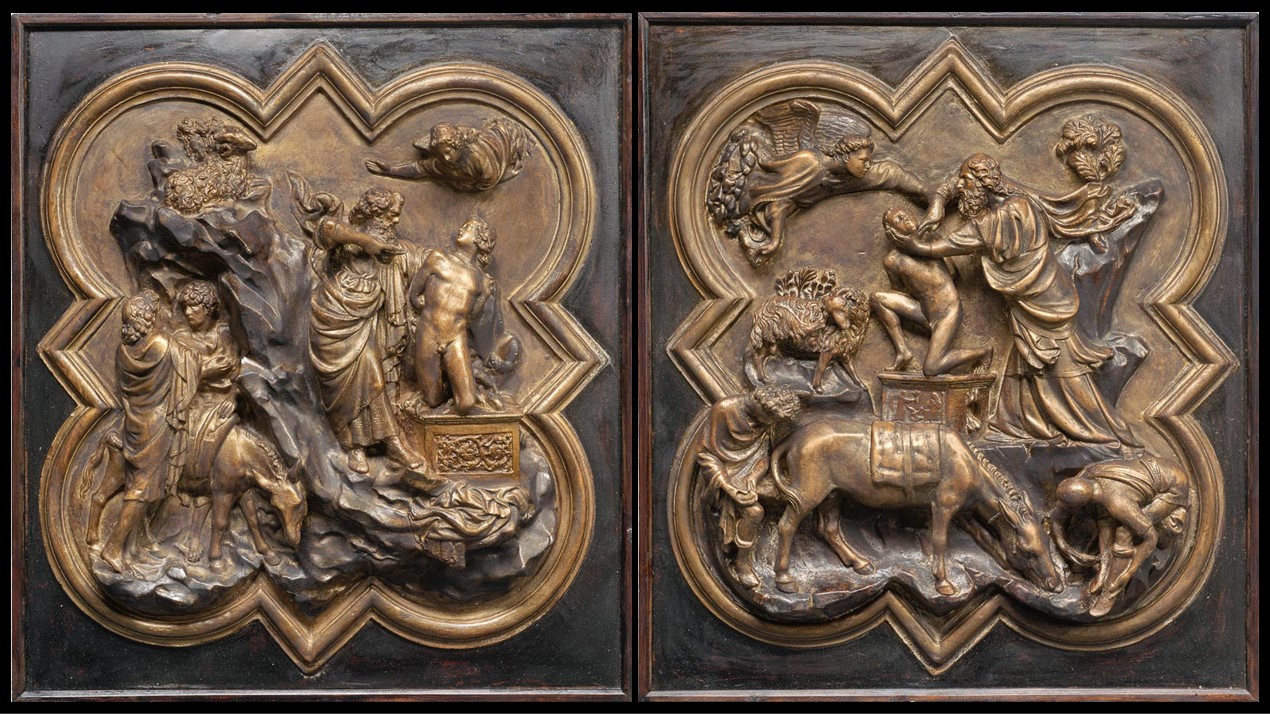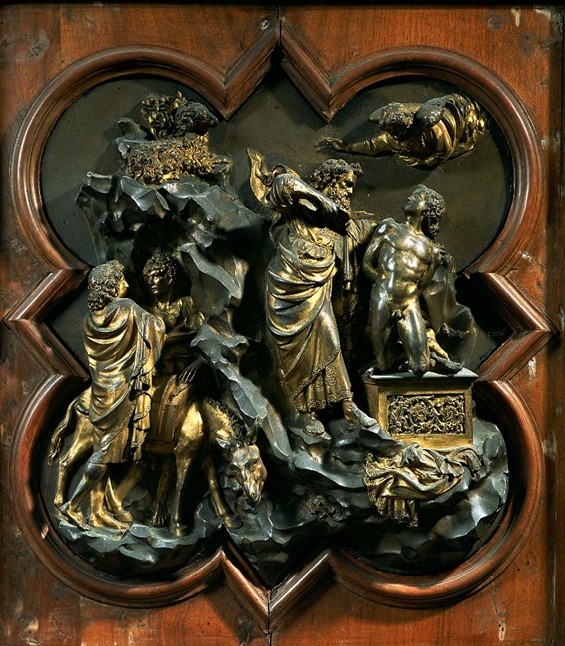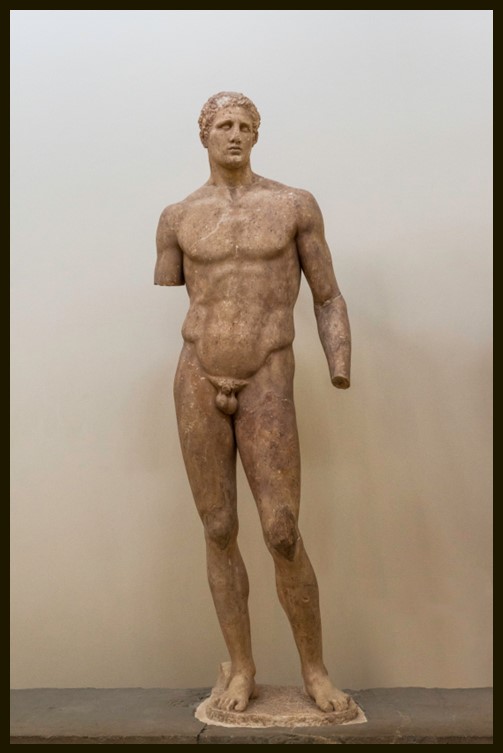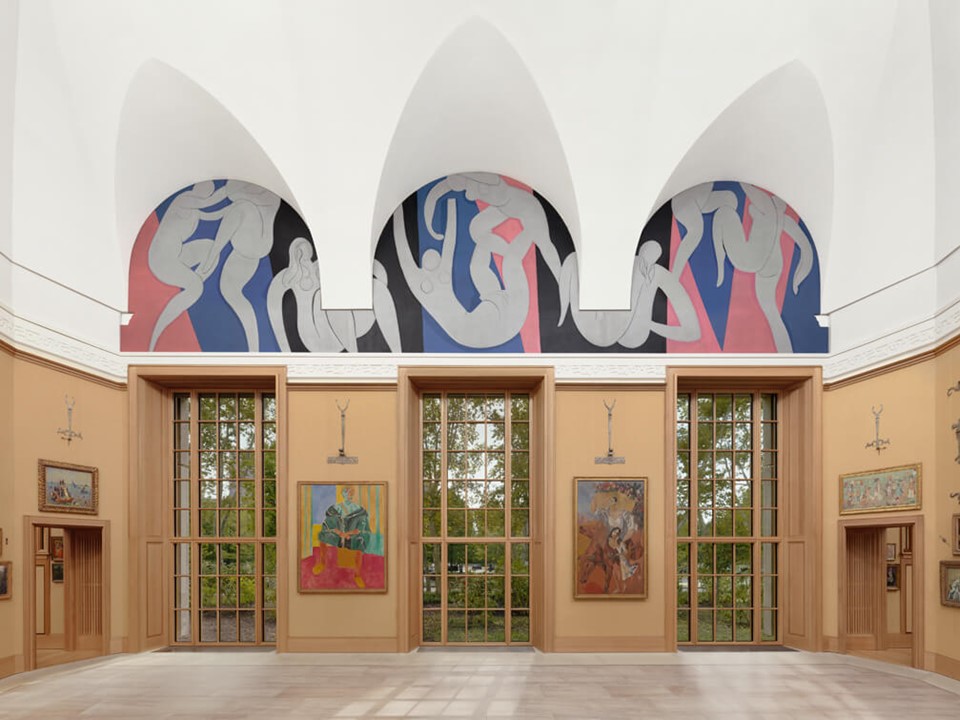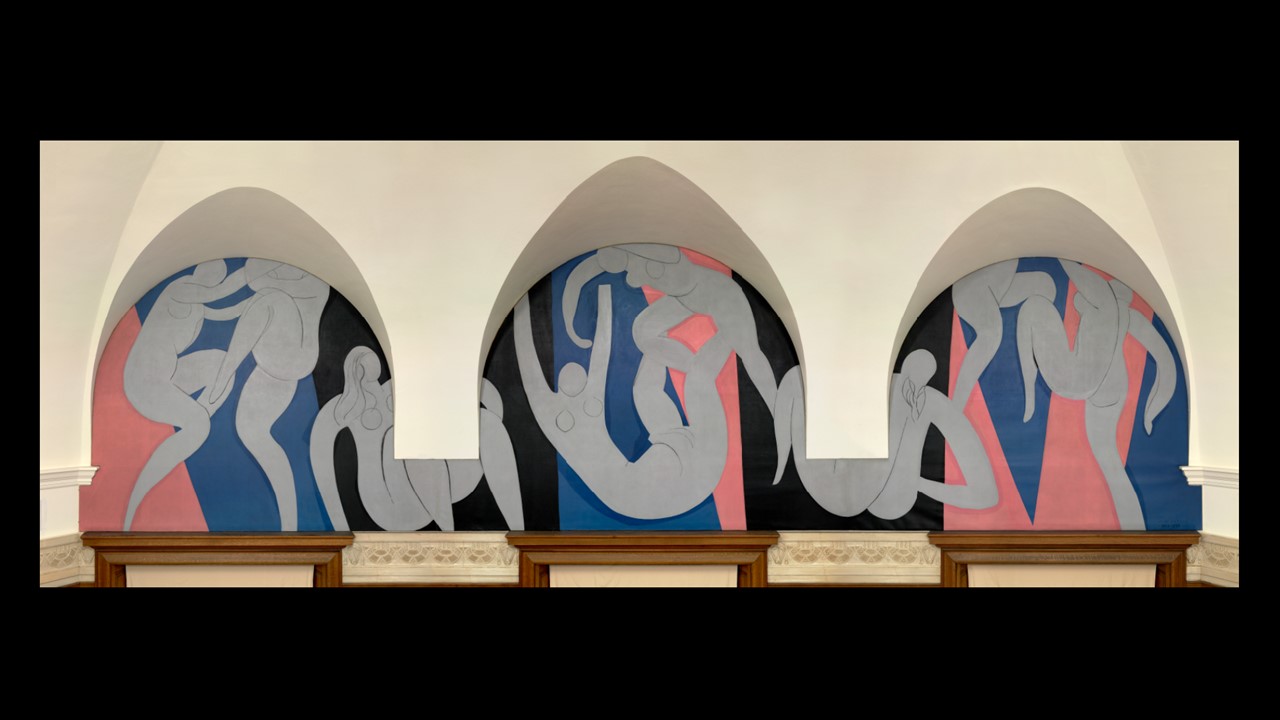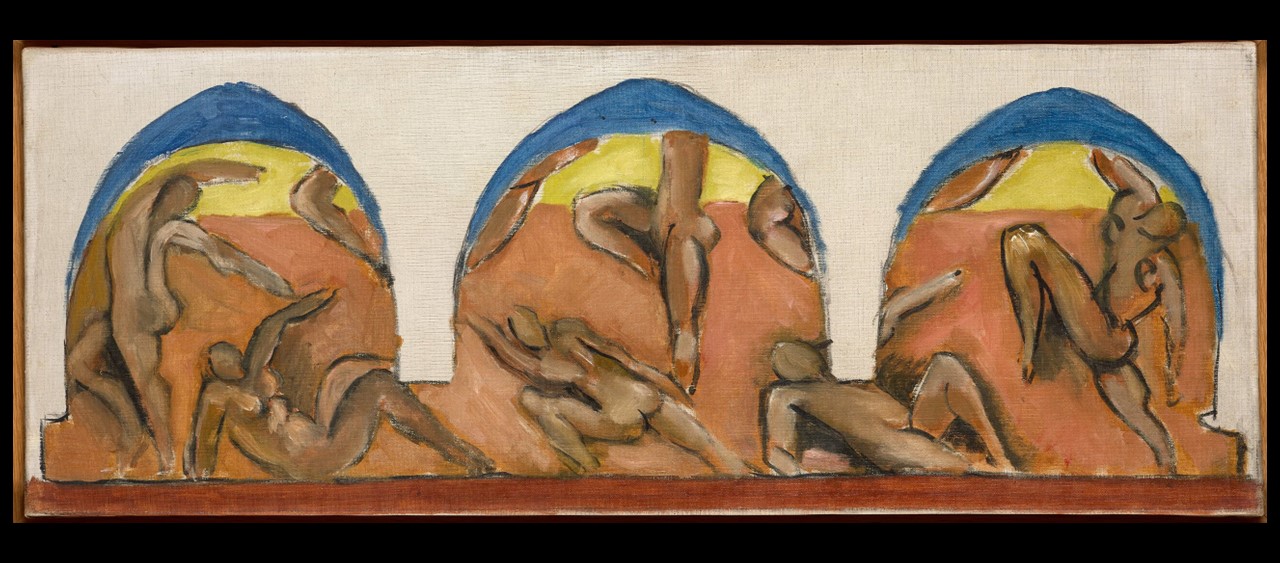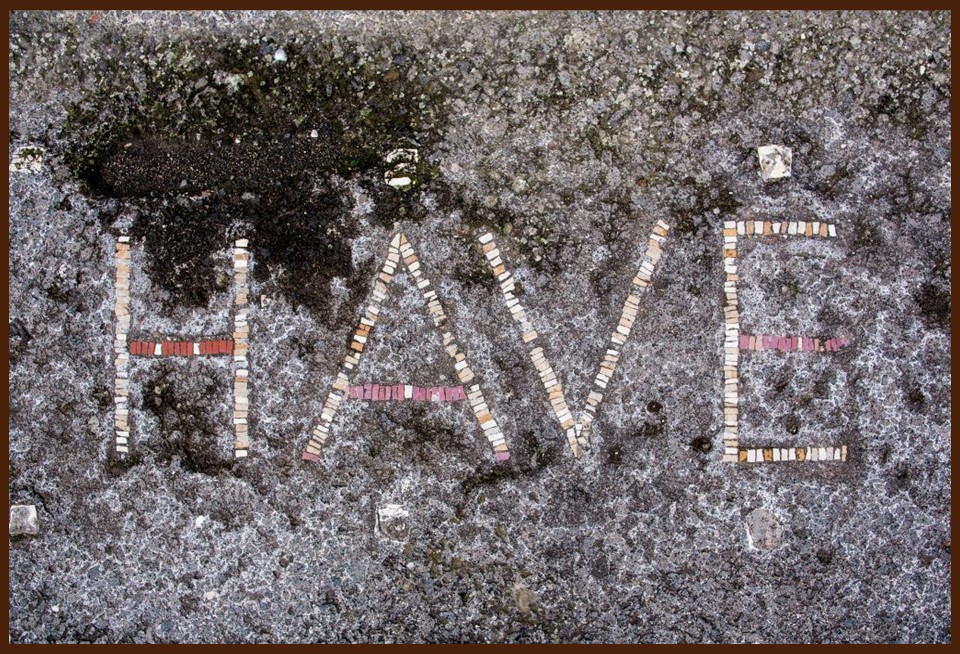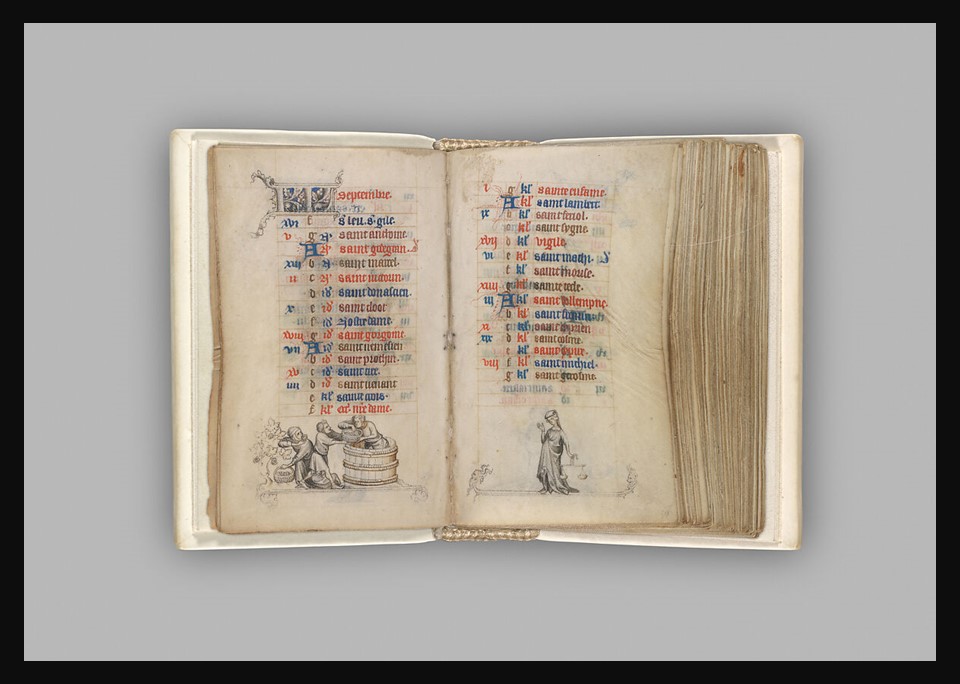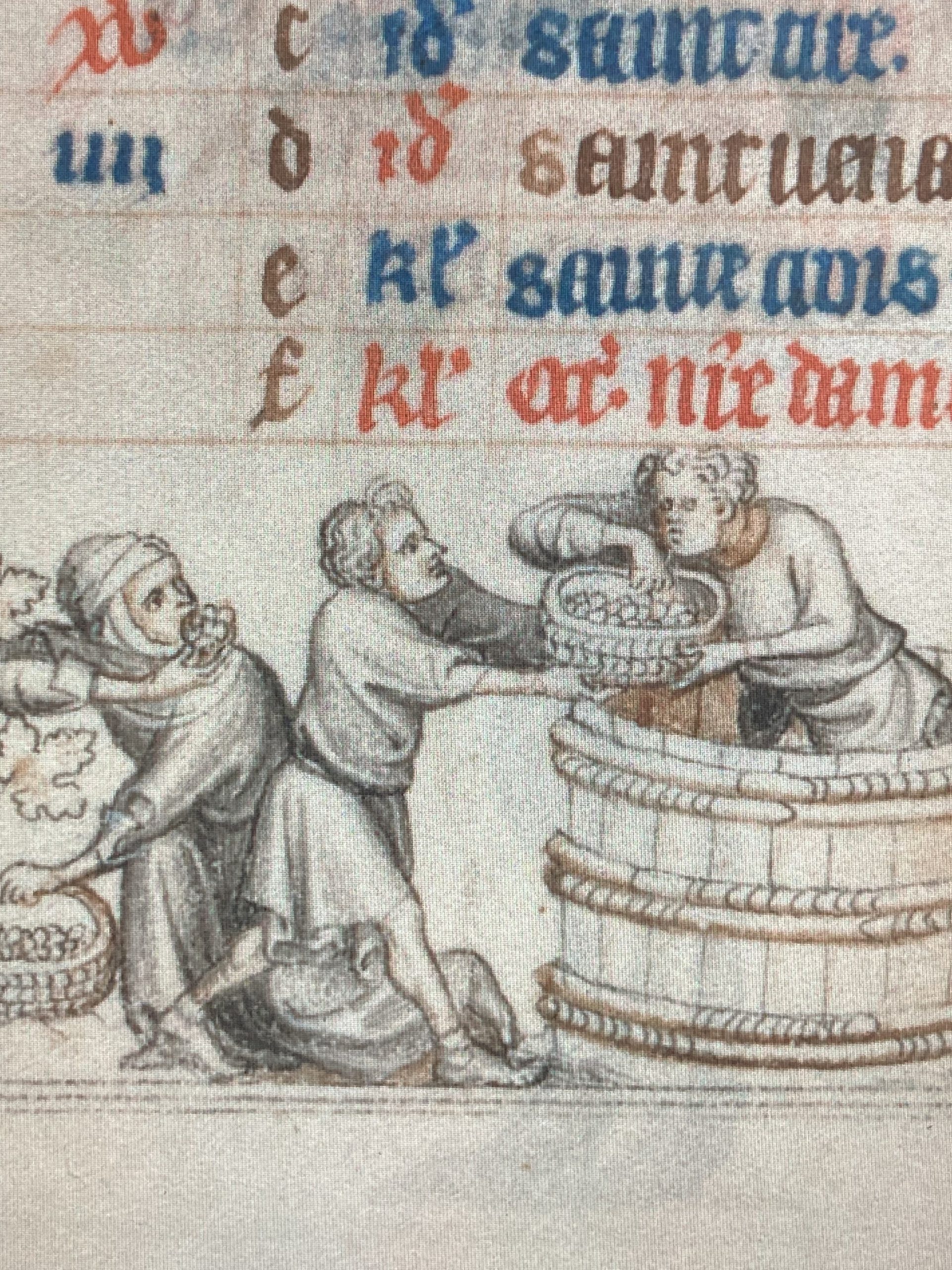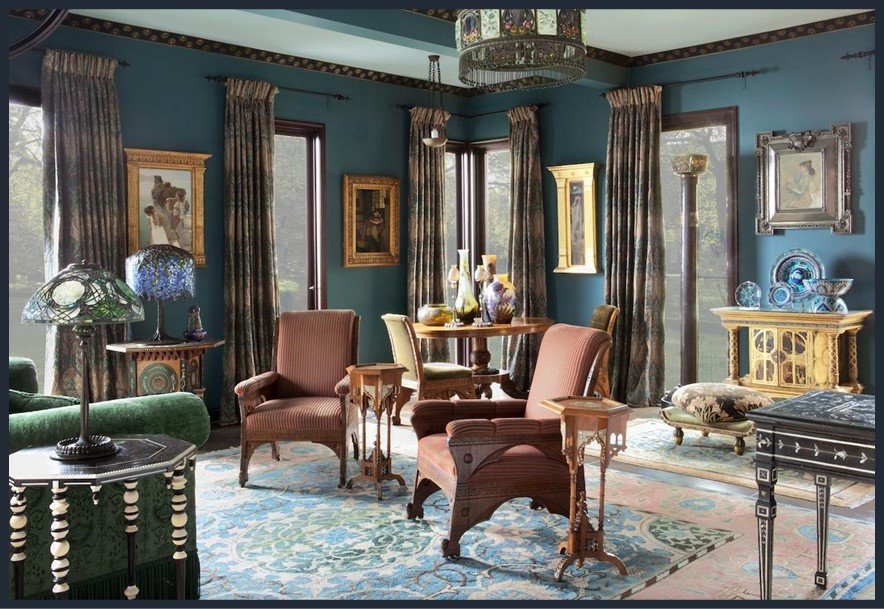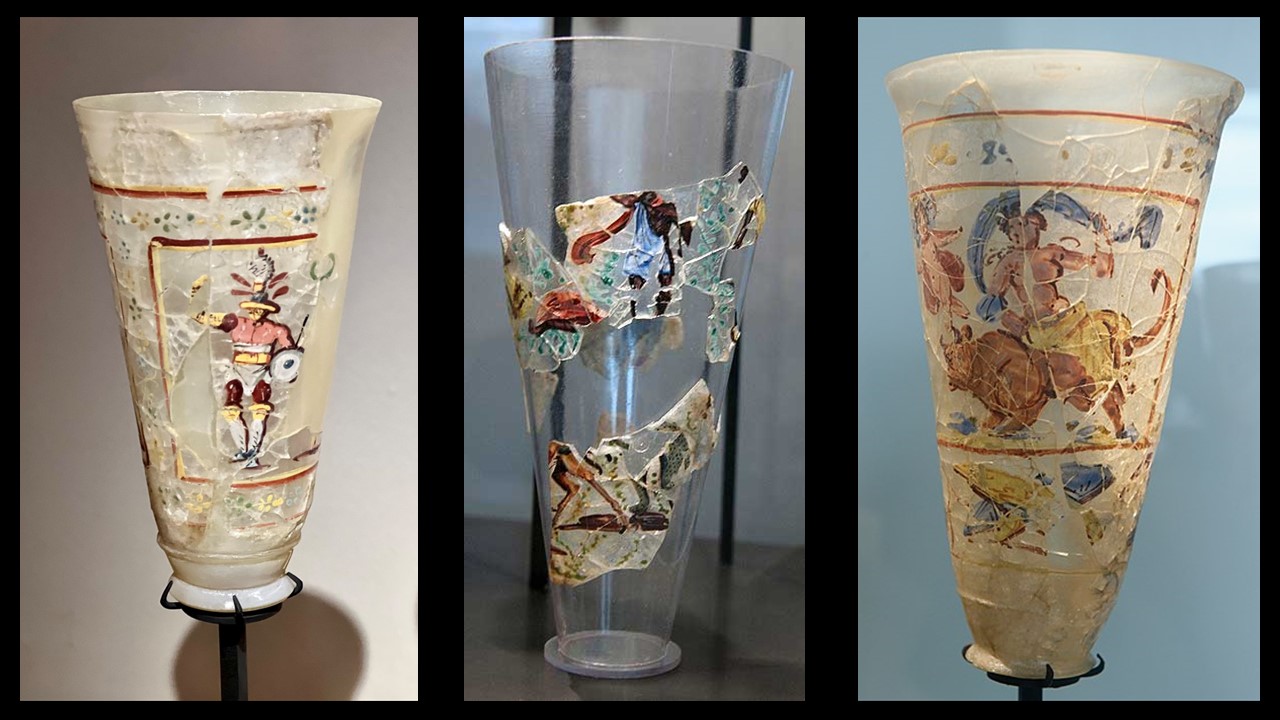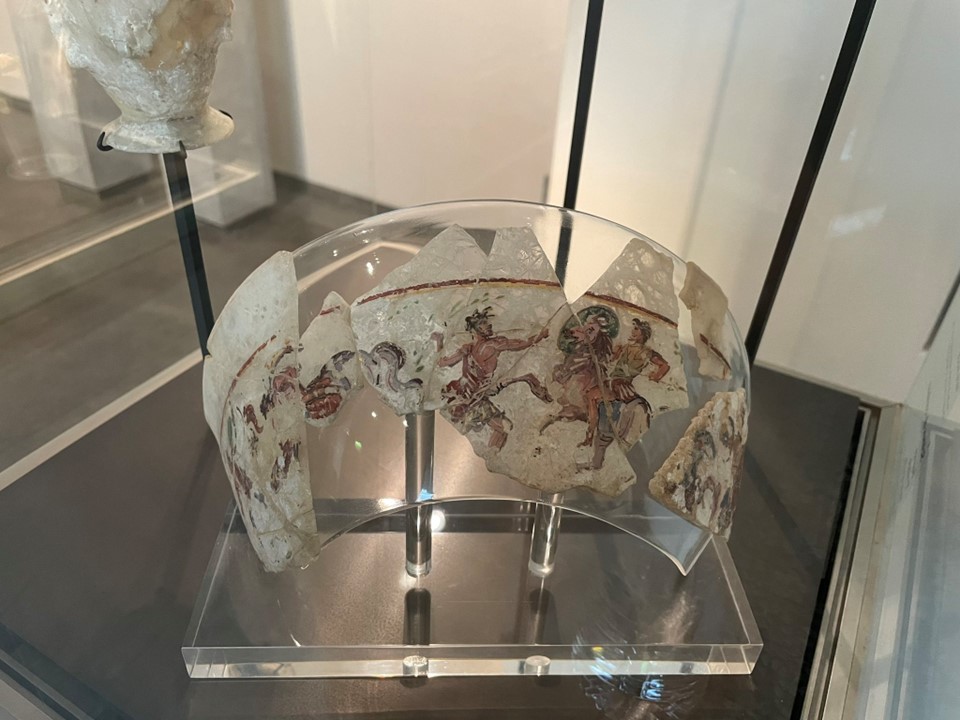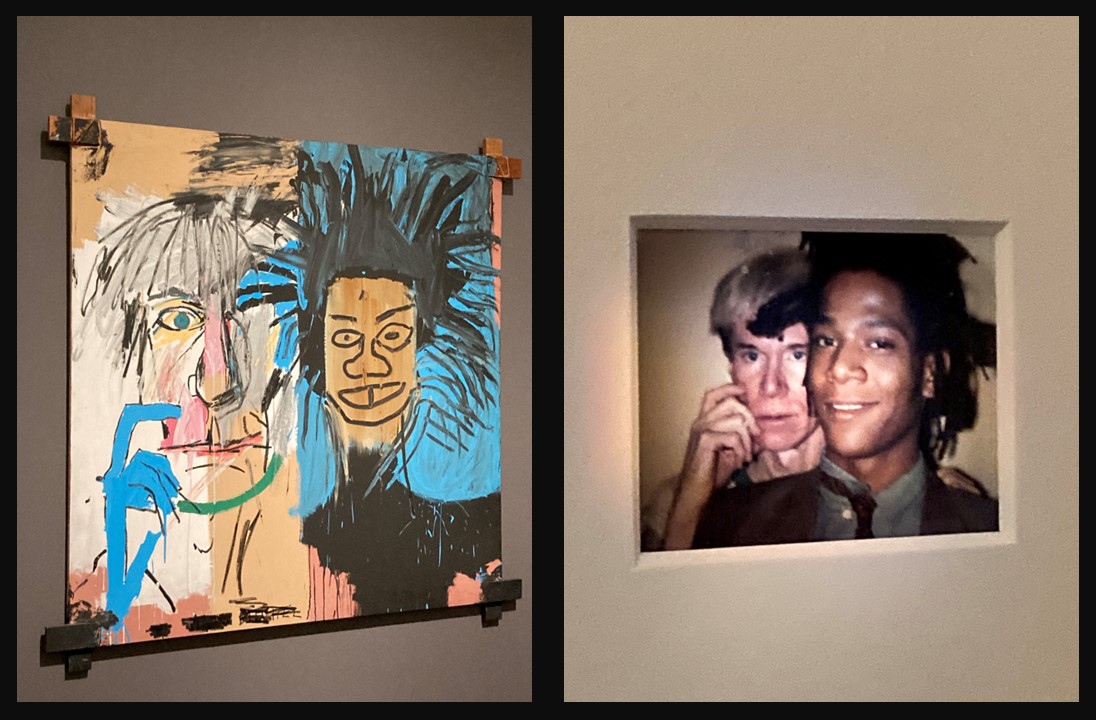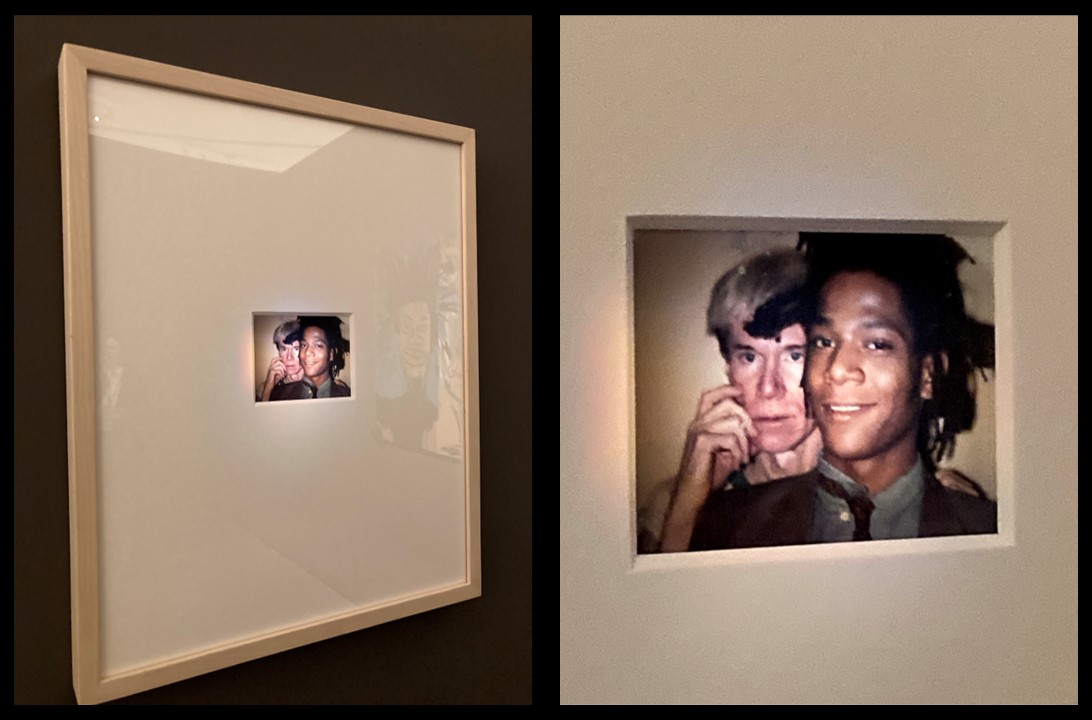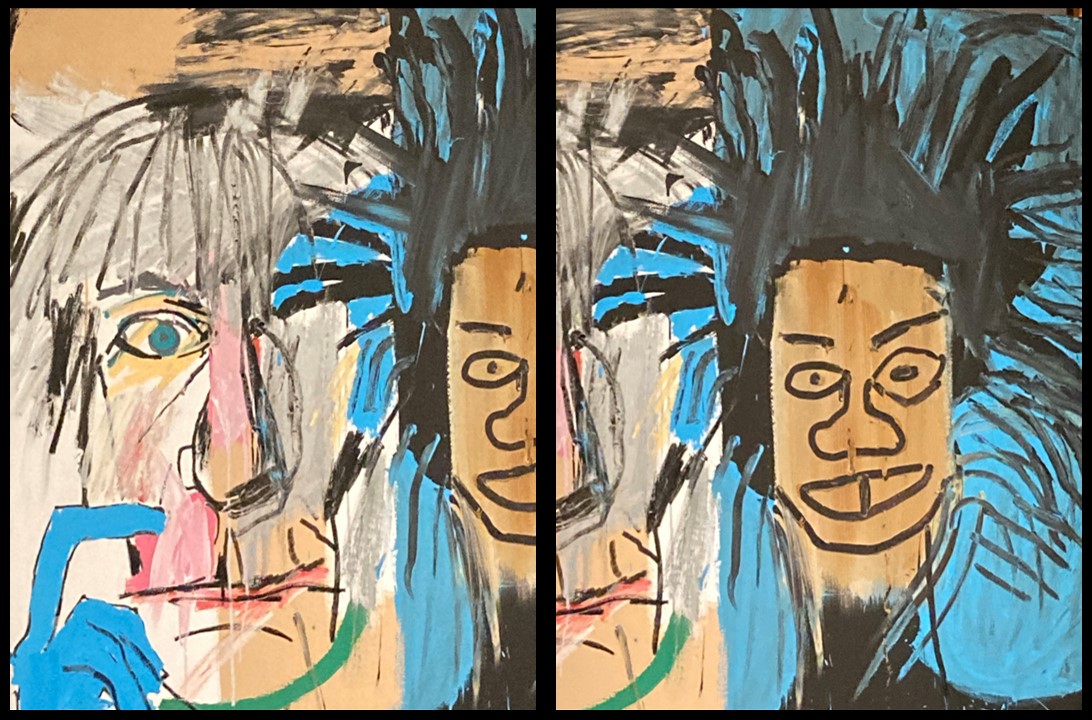
The Choice of Heracles, 1596, Oil on Canvas, 273 x 167 cm, Museo Nazionale di Capodimonte, Naples, Italy
https://el.m.wikipedia.org/wiki/%CE%91%CF%81%CF%87%CE%B5%CE%AF%CE%BF:Annibale_Carracci_-_The_Choice_of_Heracles_-_WGA4416.jpg
The Choice of Heracles by Annibale Carracci is probably loosely inspired by Philostratus’ Life of Apollonius of Tyana (6.10)… You have seen in picture-books the representation of Heracles by Prodicus; in it Heracles is represented as a youth, who has not yet chosen the life he will lead; and vice and virtue stand in each side of him plucking his garments and trying to draw him to themselves. Vice is adorned with gold and necklaces and with purple raiment, and her cheeks are painted and her hair delicately plaited and her eyes underlined with henna; and she also wears golden slippers, for she is pictured strutting about in these; but virtue in the picture resembles a woman worn out with toil, with a pinched look; and she has chosen for her adornment rough squalor, and she goes without shoes and in the plainest of raiment, and she would have appeared naked if she had not too much regard for her feminine decency. Interesting and revealing to say the least! The ancient Greek myth was invented by the sophist Prodico and perhaps suggested to Annibale Carracci by Fulvio Orsini, the librarian of the Farnese family. Interesting and revealing to say the least! https://www.livius.org/sources/content/philostratus-life-of-apollonius/philostratus-life-of-apollonius-6.6-10/
A young, thoughtful Heracles dominates the center of an extremely busy composition. He is depicted in heroic nudity, resting on his club contemplating… whether he will approach life by the path of virtue or the path of vice… And there, writes Xenophon, appeared two women of great stature making towards him. https://www.perseus.tufts.edu/hopper/text?doc=Xen.%20Mem.%202.1&lang=original and https://cal.byu.edu/macfarlane/OGCMA/HeraclesChoice1.0019_Carracci.htm
A young, thoughtful Heracles dominates the center of an extremely busy composition. He is depicted in heroic nudity, resting on his club contemplating… whether he will approach life by the path of virtue or the path of vice… And there, writes Xenophon, appeared two women of great stature making towards him. https://www.perseus.tufts.edu/hopper/text?doc=Xen.%20Mem.%202.1&lang=original and https://cal.byu.edu/macfarlane/OGCMA/HeraclesChoice1.0019_Carracci.htm
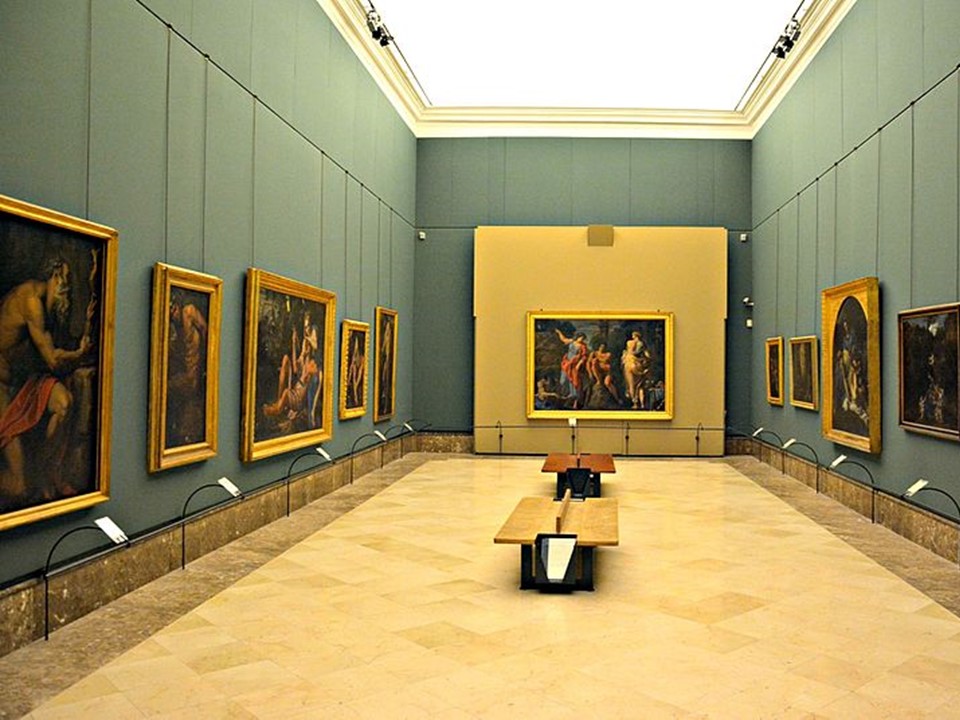
The Choice of Heracles, 1596, Oil on Canvas, 273 x 167 cm, Museo Nazionale di Capodimonte, Naples, Italy
https://artpaintingartist.org/the-choice-of-heracles-by-annibale-carracci/
On Heracles’s left side, Carracci presents a striking woman, the personification of Pleasure, standing in front of a lush landscape, green, luxuriant, and blossoming. She gestures to play cards, musical instruments, and theatrical masks. She entices him with her presence, the symbols of carnal pleasures, and her words… Heracles, I see that you are in doubt about which path to take toward life. Make me your friend; follow me, and I will lead you along the pleasantest and easiest road. You shall taste all the sweets of life; and hardship you shall never know. https://www.perseus.tufts.edu/hopper/text?doc=Xen.%20Mem.%202.1&lang=original
On Heracles’s right side, Carracci painted the personification of Virtue, who according to Xenophon, addressed young Heracles in an exemplary way… I, too, am come to you, Heracles: I know your parents and I have taken note of your character during the time of your education. Therefore I hope that, if you take the road that leads to me, you will turn out a right good doer of high and noble deeds, and I shall be yet more highly honoured and more illustrious for the blessings I bestow. But I will not deceive you by a pleasant prelude: I will rather tell you truly the things that are, as the gods have ordained them. [28] For of all things good and fair, the gods give nothing to man without toil and effort. If you want the favour of the gods, you must worship the gods: if you desire the love of friends, you must do good to your friends: if you covet honour from a city, you must aid that city: if you are fain to win the admiration of all Hellas for virtue, you must strive to do good to Hellas: if you want land to yield you fruits in abundance, you must cultivate that land: if you are resolved to get wealth from flocks, you must care for those flocks: if you essay to grow great through war and want power to liberate your friends and subdue your foes, you must learn the arts of war from those who know them and must practice their right use: and if you want your body to be strong, you must accustom your body to be the servant of your mind, and train it with toil and sweat.’ [29]
Carracci’s personification of Virtue is presented as a young, unpretentious woman, dressed in blue and red. She stands in front of an arid landscape, and points at the winding road up a mountain plateau, where the winged Pegasus, emblem of the Farnese family, awaits Heracles to guide him to Mount Olympus. A life of Virtue, however, does not come without fame and distinction. In the lower-left corner, Carracci painted a poet crowned in laurels looking up to Virtue and Heracles, ready to immortalize the Hero’s accomplishments and assure him great renown.

Camerino Farnese (the ceiling), 1596, 4.8×9.4m, Private Room of Cardinal Oduardo Farnese. Palazzo Farnese, Rome, Italy
https://it.ambafrance.org/Camerino-d-Ercole
The Choice of Heracles by Annibale Carracci once graced the center of the ceiling in a small room known as the Camerino di Ercole in the Farnese Palace in Rome. The room’s iconography was determined by the palace’s librarian, Fulvio Orsini, who knew the fifth-century Ancient Greek parable involving Hercules… Cardinal Odoardo Farnese selected Annibale to execute the Camerino’s decor, which the artist completed between 1595–97. In 1662 the Carracci’s canvas was replaced by a copy, still in place, underwent various movements, and then became part of the “Cabinet of obscene paintings” of the Royal Bourbon Museum. Today, it is exhibited in Museo Nazionale di Capodimonte, Naples, Italy. https://artsandculture.google.com/asset/hercules-at-the-crossroads-annibale-carracci/EwGkF5dbmWVeHw and https://capodimonte.cultura.gov.it/oggi-e-il-compleanno-di-annibale-carracci/
For a Student Activity inspired by Annibale Carracci’s The Choice of Heracles, please… Check HERE!
